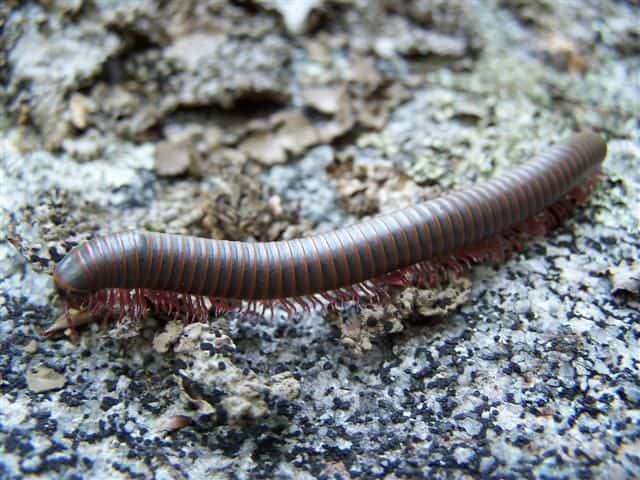Table of Contents
Millipedes can make for wonderful and interesting pets, particularly for kids, as they are fascinating to watch. These gentle, docile creatures are easy to care for and can be kept safely in a glass or Plexiglas enclosure.
In their natural environment, millipedes like to inhabit dark, damp places such as under rotting logs, dead leaf piles, or rocks. They stay hidden during the day as they are nocturnal creatures, preferring to come out at night when the temperatures are not so warm and a time when many of their predators are inactive.
Millipedes enjoy eating dead or decaying wood and vegetation, but where these food sources are not readily available, they may turn to living plants or insects.
enjoy eating dead or decaying wood and vegetation, but where these food sources are not readily available, they may turn to living plants or insects.
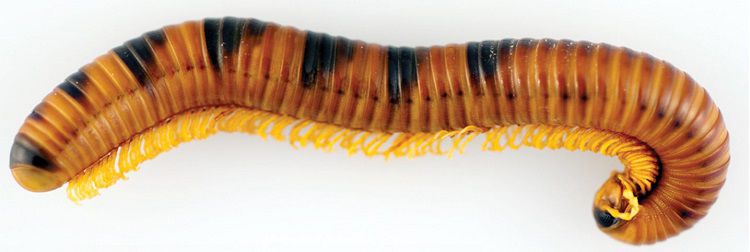
Sagmatostreptus strongylopygus 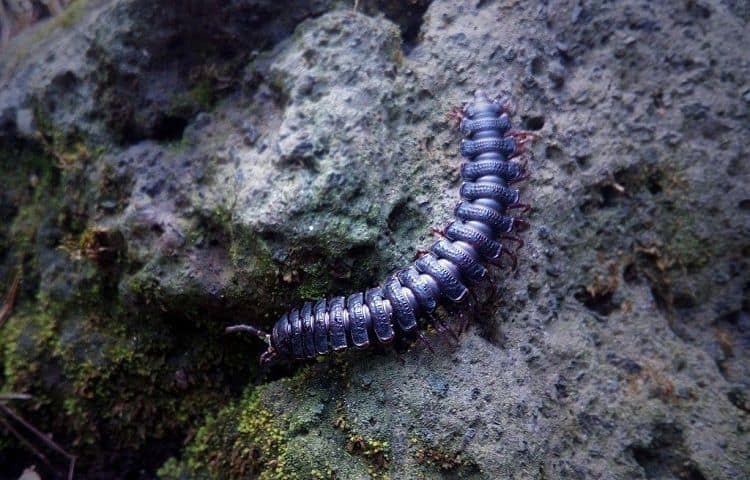
Flat Millipede 
Spotted Snake Millipede
How Long do Millipedes Live?
The average lifespan of a millipede is anywhere between seven and ten years. However, much depends on the environment and the exact species. What often happens to millipedes in the wild is that they will venture into homes or businesses, especially after long periods of drought or rain. Unfortunately for the millipedes, homes and businesses rarely provide the levels of moisture that are required, so unless they can get back outside of the building, they are unlikely to live longer than two to three weeks.
How Long do Millipedes Live in Captivity?
In captivity, things are different for millipedes. This is because the environment in which they live will have been artificially created to mimic their natural habitat. Millipede owners provide suitable housing, with adequate substrate and regular food. Millipedes in captivity can therefore live longer than their wild brothers and sisters.
If you are considering a millipede as a pet, you can expect it to be with you for around ten years (provided it is cared for properly). However, if you have found a millipede near to your home and are planning to keep it as a pet, you will obviously be unable to tell how old it is at the time you found it. But as a rule, from the time they hatch, well-cared-for millipedes can be expected to live for up to ten years.
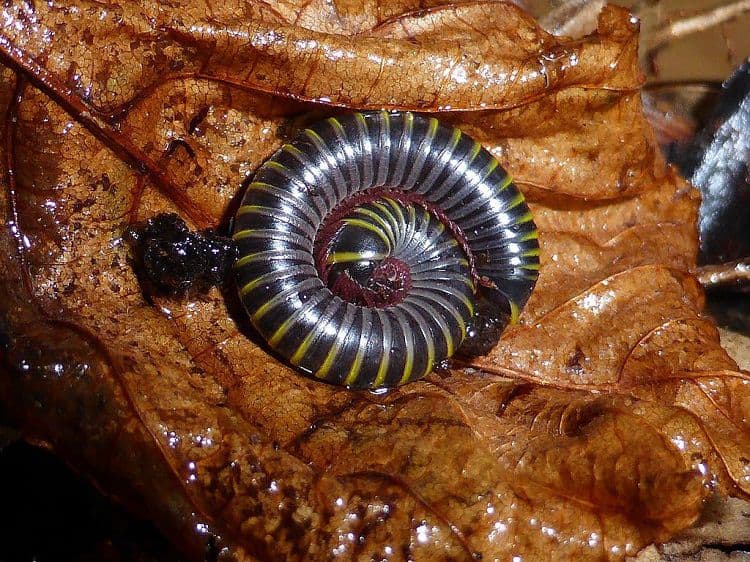
Yellow Banded Millipede 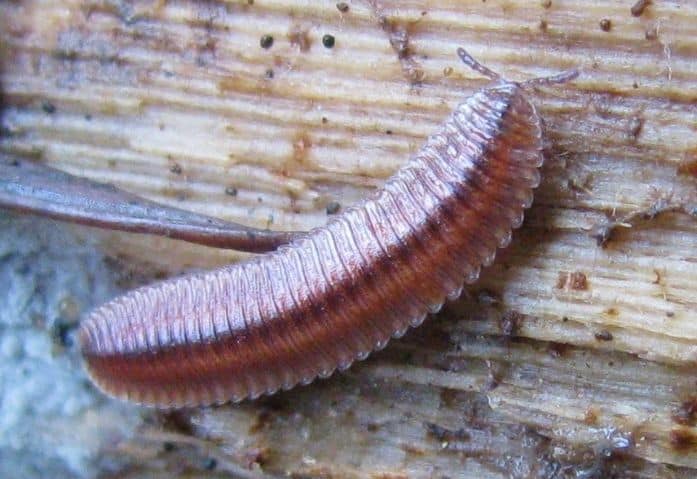
Octoglena bivirgata 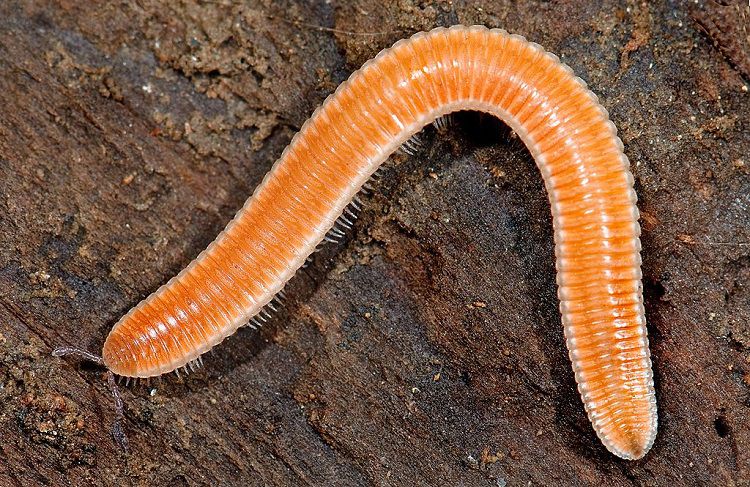
Millipede
The Lifecycle of Millipedes
Male and female millipedes mate by wrapping their bodies around each other. The genitals of millipedes are located on their third body segment. The pair will rub these segments together in opposing directions, which allows the male’s sperm to enter the female’s body.
The female millipede will typically lay her eggs in the soil a few weeks after mating and she will resort to protecting this area of the soil. Females can lay up to one hundred eggs at a time, and these eggs typically take around three months to hatch.
Newly hatched millipedes are known as nymphs and do not look like adults. They have fewer body parts and very few legs. Unlike adult millipedes, which can have up to 350 pairs of legs, the nymphs will have no more than four pairs.
Nymphs go through a number of molts as they mature. This is when they shed their exoskeleton before a new bigger one grows. It can take from two to five years for millipedes to reach full maturity. Upon reaching adulthood, they will begin mating. Therefore, if you do not want to be overrun with millipedes, it is important to separate the males from the females. To do this you will need to sex them. This is easy enough to do: male millipedes have a modified leg on the seventh segment of their body.
Photo Credits:
- Featured Image (American Giant Millipede): Randal J. (RJFerret) – This file is licensed under the Creative Commons Attribution-Share Alike 2.5 Generic license.

- Octoglena bivirgata: Sam McNally – https://www.inaturalist.org/photos/275405
 – This file is licensed under the Creative Commons
– This file is licensed under the Creative Commons Attribution-Share Alike 4.0 International
Attribution-Share Alike 4.0 International license.
license. - Yellow-Banded Millipede: Totodu74
 – This file is licensed under the Creative Commons
– This file is licensed under the Creative Commons Attribution-Share Alike 3.0 Unported
Attribution-Share Alike 3.0 Unported license.
license. - Sagmatostreptus strongylopygus: Henrik Enghoff. 2011. Trans-segmental serial colour patterns in millipedes and their developmental interpretation (Diplopoda). International Journal of Myriapodology 6: 1–27, doi:10.3897/ijm.6.1949
 – This file is licensed under the Creative Commons
– This file is licensed under the Creative Commons Attribution 4.0 International
Attribution 4.0 International license.
license. - Yellow-Spotted Millipede: Franco Folini
 – This file is licensed under the Creative Commons
– This file is licensed under the Creative Commons Attribution-Share Alike 3.0 Unported
Attribution-Share Alike 3.0 Unported license.
license. - Apheloria virginiensis: Bob Walker – This file is licensed under the Creative Commons
 Attribution-Share Alike 4.0 International
Attribution-Share Alike 4.0 International , 3.0 Unported
, 3.0 Unported , 2.5 Generic
, 2.5 Generic , 2.0 Generic
, 2.0 Generic and 1.0 Generic
and 1.0 Generic license.
license. - Spotted Snake Millipede: Whitney Cranshaw – http://www.insectimages.org/browse/detail.cfm?imgnum=5393517
 – This file is licensed under the Creative Commons
– This file is licensed under the Creative Commons Attribution 3.0 Unported
Attribution 3.0 Unported license.
license. - Flat Millipede: Danny Khorskhi – This file is licensed under the Creative Commons
 Attribution-Share Alike 4.0 International
Attribution-Share Alike 4.0 International license.
license. - Millipede: Marshal Hedin
 – This file is licensed under the Creative Commons
– This file is licensed under the Creative Commons Attribution 2.0 Generic
Attribution 2.0 Generic license.
license.

